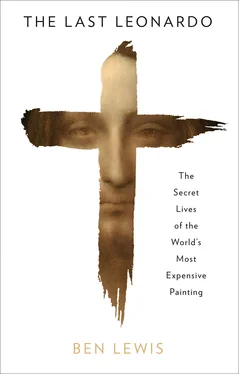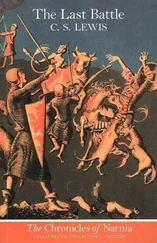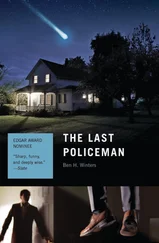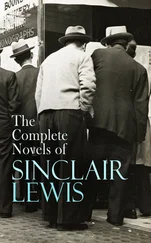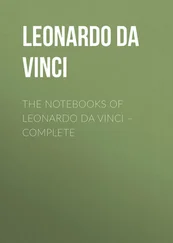The value that is set on paintings depends not only on the name of the Master and the time of his age he drew them in, but likewise in a great measure on the scarcity of his works, and what is still more unreasonable, the quality of the persons, in whose possession they are, as well as the lengths of time they have been in great families; and if the Cartoons now at Hampton Court were done by a less famous hand than that of Raphael, and had a private person for their owner, who would be forced to sell them, they would never yield the tenth part of the money which with all their gross faults they are now esteemed to be worth. 1
There is also a second use for provenance studies. If the authorship of a painting is in doubt or contested, provenance can offer clues.
The inventories and archives of rich collectors often contain documents with dates and places, which allow one to trace a picture from collector to collector, in reverse chronology, to a time and place close to when and where it was made. This, in turn, can indicate who painted it. The provenance researcher may also consider whether a collector tended to buy originals or copies (sometimes difficult to tell apart connoisseurially, if the copyist is good), or if works by a particular artist were on the market in a particular place during a particular period. If the painting is genuinely a high-quality work, it is more likely to have been in the collection of a ruler or nobleman. An artist was less likely to offer a royal client a painting made by his assistants (though it did happen from time to time), and a ruler, with his team of eagle-eyed art advisers, was less likely to accept one. Often the inventories state in which room the work of art was displayed, and this detail can also become very important. If it was hung in an official hall or reception room, then it was probably an important painting; if it was placed in a corridor, on the stairs, or worse, in a storeroom, it was probably thought of as a second-rate work.
At the heart of this research are the inventories, handwritten on parchment or thick crusts of paper. These can be catalogues of collections compiled by the owner’s clerks or ‘keepers of pictures’. They may be itemised lists of works of art available for purchase from a hard-up merchant, or troves of freshly acquired art that are about to be shipped out of Italy, or the valuables that a bride took with her to her new home. In an age when money was not kept in banks, you were what you owned. You didn’t want your possessions, spread across your many-roomed mansions, to slip away. Largely ignored as a source of information until the late twentieth century, inventories have become the coalface of one of the most fashionable fields of art history today, rich seams of data from which deductions, speculations and occasionally conclusions can be extracted.
While inventories are vital to building a case for attribution for thousands of Renaissance paintings, the raw material is challenging. The fragmentary nature of the records means that most histories have gaps. The names of artists are spelt in many ways, and attributions can change from list to list. Descriptions of the paintings are, until the late nineteenth century, only textual, with scarcely a visual reference. That is an immense problem, because the range of subjects – especially biblical and classical – was limited, the titles are often similar, artists often made several paintings of the same subject, and the descriptions in the inventories are brief. Dimensions are rarely supplied, and sometimes there is only a title without a painter’s name attached. The result is that provenance histories for works of art from before the nineteenth century are frequently assembled from a range of probabilities, which reinforce each other. Such structures can be precarious, wobbling between the likely and the hypothetical. The evidence is often circumstantial, but art history is a discipline that studies the products of the imagination; a certain flexibility is permitted, while the marvellous objects themselves have been known to inspire the most rigorous of academic minds to meld fact with fantasy.
Since the author and the date of Robert Simon’s painting were unknown, he began to research its provenance within weeks of acquiring it. By his own account he spent an hour a day, every day for six years, studying the Salvator . Every Old Masters dealer has to present an account of the provenance of artworks they wish to sell. Most of them subcontract this work to specialists and academics, but Simon is a particularly scholarly dealer, who enjoys the archives and takes pride in his abilities. He had done provenance research many times before the Salvator arrived in his gallery.
The first clue was two initials and a number on the back of the painting: ‘CC 106’. Simon traced that back to the important nineteenth-century Cook Collection, belonging to a British cloth merchant. Some claim that Sir Francis Cook assembled the greatest art collection in private hands in Britain at that time, with the exception of Queen Victoria’s. A three-volume catalogue of his treasures was published in 1913. There, Simon discovered his painting, listed as ‘cat. number 106’, on page 123 of Volume I, which was entitled ‘Italian Schools’. However, it was not attributed to Leonardo but described as a poor copy, and there was no photograph of the painting in the catalogue. Simon turned to the photo archives.
It was the technology of photography that made modern art history possible. From the mid-nineteenth century specialised photo studios, most famously Alinari in Rome, methodically, accurately and beautifully photographed every notable work of art they could find, supplying an ever-growing market with perfect images, albeit in black and white. Museums and institutions built collections of thousands of photos, while art historians and connoisseurs amassed their own private stockpiles – it was a way for them to keep images of all the art they studied and loved close to them, in their homes. The previously uncontainable – a vast sea of images spread across many thousands of kilometres, too large and diverse to be committed to memory – could now be held in one’s hands, spread out on a table or stored in a cupboard.
For art historians, photography was like the spear that enabled cavemen to hunt woolly mammoths. The scholars scribbled notes on the backs of their images, with dates, authorship, and what they knew of the ownership of the painting. By laying out a selection of photographs on their desks they could study, for example, the drapery folds or facial features in a hundred anonymous Renaissance altarpieces and group them according to stylistic traits. They could then associate those stylistic traits with documented works by this or that artist, thus defining his or her oeuvre and, if they had some dates, stylistic development. They could pull out all the pictures they had on a particular subject, like the Last Supper, or the Madonna and Child, or indeed the Salvator Mundi, and, if they knew the dates, arrange them chronologically to see how the treatment of that subject evolved over time, which artists innovated, and which copied those innovations. Thus was born an art history of style and symbol. Acquired over many decades, many of these photographs have survived while the pictures they record have been destroyed or gone missing. They are not just a record of the art we have; they are also a record of the art we have lost.
Robert Simon visited the Witt Library photo archive in the basement of the Courtauld Institute of Art in London. There he accessed all the folders of images marked ‘Salvator Mundi’. Soon he found a photograph of the Cook Collection’s Salvator , where once again it was listed as a copy. Simon was not surprised by that. Sleepers were almost always miscatalogued, otherwise they would not have ‘slept’ so long. On the bottom right of the photograph was a typed text reading ‘(Cook Coll. Richmond)’, and underneath, handwritten, ‘Whereabouts unknown (1963)’. So nobody had known where this picture was in 1963.
Читать дальше
